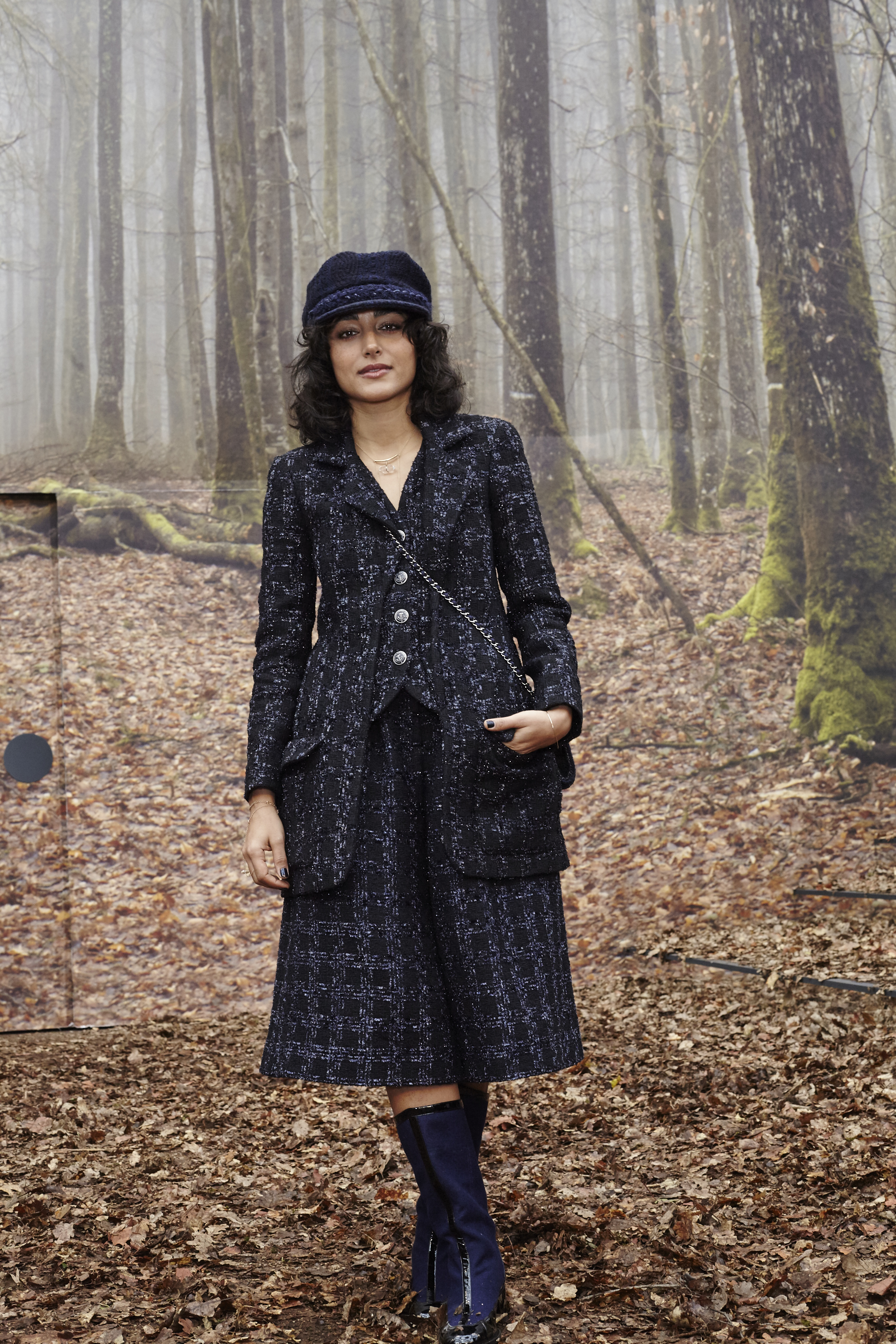 As a returning Chanel ambassador, Golshifteh Farahani reflects both the aesthetic insouciance of her adopted home, Paris, and the intellectual, reflective approach to fashion of a worldly erudite. The Iranian actor and musician, who was once reportedly banned from her native Tehran for appearing at a movie premiere without a veil abroad, spoke with tangible enthusiasm about Chanel’s feminine approach to dressing the modern woman, describing the house as a monument of France. Having starred in a diverse range of international films like Body of Lies, About Elly and Pirates of the Caribbean, Farahani caught up with us after the Chanel Fall/Winter 2018 show to give some interesting insight on Chanel’s set production, the secret life of Coco Chanel, and the real difference between dressing up for a role and a fashion show.
As a returning Chanel ambassador, Golshifteh Farahani reflects both the aesthetic insouciance of her adopted home, Paris, and the intellectual, reflective approach to fashion of a worldly erudite. The Iranian actor and musician, who was once reportedly banned from her native Tehran for appearing at a movie premiere without a veil abroad, spoke with tangible enthusiasm about Chanel’s feminine approach to dressing the modern woman, describing the house as a monument of France. Having starred in a diverse range of international films like Body of Lies, About Elly and Pirates of the Caribbean, Farahani caught up with us after the Chanel Fall/Winter 2018 show to give some interesting insight on Chanel’s set production, the secret life of Coco Chanel, and the real difference between dressing up for a role and a fashion show.
How does it feel to be back with Chanel?
“As you can see, the show was just wonderful and it’s a great Maison.”
As an actress do you feel like the set is as good as a cinema set?
“It’s different—this is very elaborate and cinema sets can also be very elaborate, like in Pirates [of the Caribbean: Dead Men Tell No Tales], the boats, ships and everything. [This] is very serene—all of this is set up for just 20 minutes, it’s amazing.”
France is your adopted country, what do you like about Chanel?
“It’s monumental—I think Chanel is a monument of France, it’s important. I love the delicacy; I love the femininity. If you look at all French brands, there is a delicacy. And that is something very specific to French fashion. I love the intellectual look.”
What do you admire about Coco Chanel?
“I know a lot about her loneliness because that’s what interests me the most. If you look at Instagram, you always post moments of joy, but what we don’t know is about what’s happening underneath. And what I came to understand when I was a little girl, was that she was very lonely and she was saying hello to a statute and saying goodbye to a statue. That’s what interests me, peoples pain and their vulnerability—that’s very touching for me. Even looking at her apartment, she wasn’t even sleeping there, she was sleeping in a hotel room right across the street, she didn’t have a bed in her apartment. There’s a kind of vulnerability that touches my heart a lot.”
